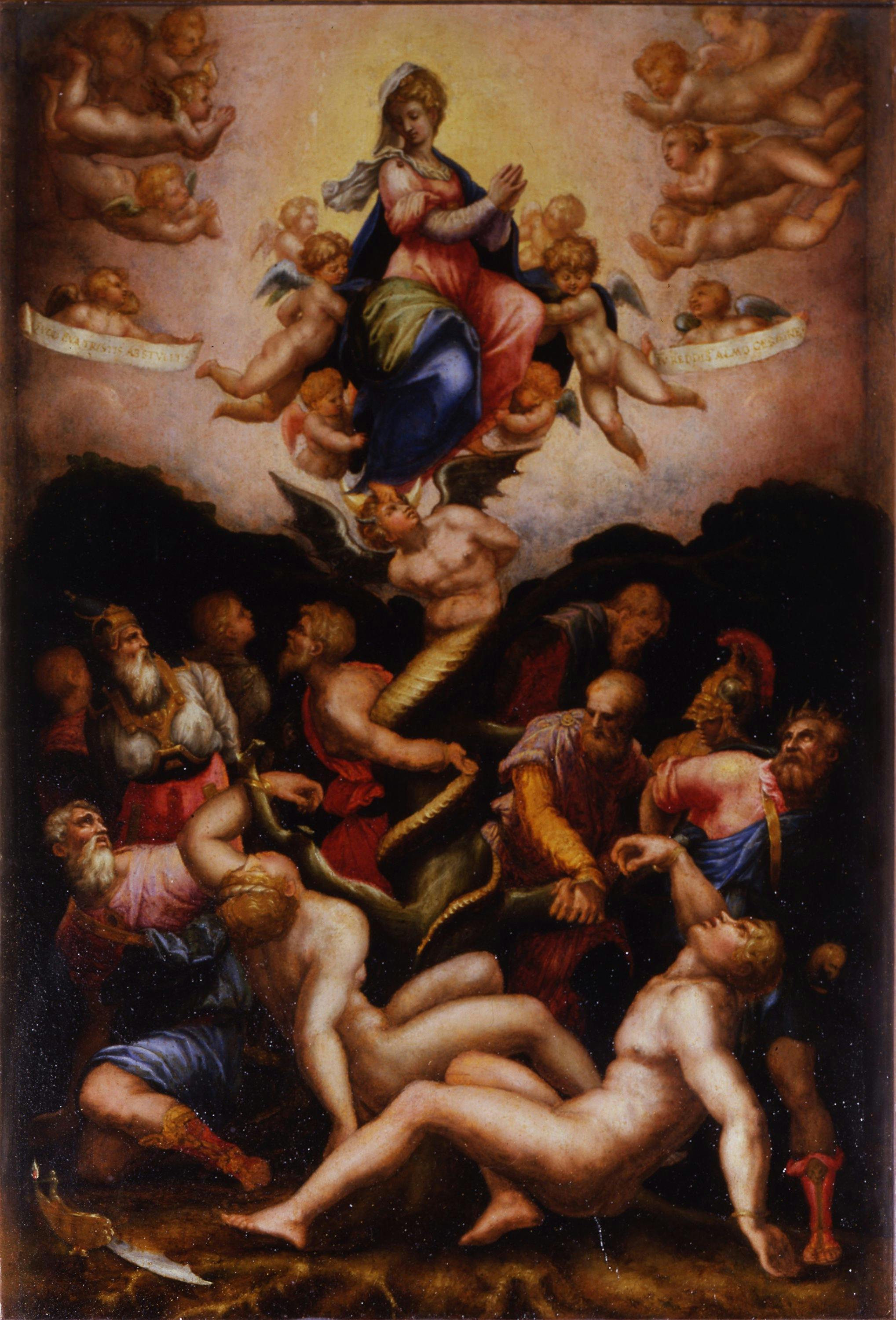Allegory of the Immaculate Conception
Giorgio Vasari (Arezzo 1511 - Firenze 1574)
“Quod Eva tristis abstulit, tu redis almo germine”
This small painting is a valuable replica, created for a private client, of the main altarpiece painted by Vasari for the chapel of the Altoviti family in the Church of the Santissimi Apostoli in Florence. In his Memoirs, the artist describes the altarpiece in detail, revealing its complex iconography, which he had developed with the aid of various scholars, including Giovanni Lappoli, known as “Il Pollastra”, canon of the Cathedral of Arezzo and Vasari’s teacher.
The subject is the result of the fusion between a passage of the book of Genesis (Gen 3.15) in which it is announced that the seed of Eva will crush the serpent’s head, and the verses of the book of Revelation (Rev 12.1) in which the Virgin appears as a “woman dressed in sun, with the moon beneath her feet and a crown of twelve stars on her head”. The scene rotates round the Tree of the Knowledge of Good and Evil. The body of the serpent-demon, with horned head and bat’s wings, is coiled around its trunk. The Virgin in Heaven is squashing the serpent with her foot, while a flight of whirling angels fly around her, displaying scrolls bearing verses of the hymn O gloriosa domina. (O Heaven’s glorious mistress). At the bottom, Adam and Eve and the progenitors of the people of Israel, in twisted poses and with their wrists bound, look towards the sky, their expressions showing their suffering, but look like animated by hope too. The Virgin, the only mortal creature to have been exempted from original sin when she was conceived, illuminates the daughters of Eve with divine light, loosening the laces that chained them to the tree of sin, and leading them towards redemption.
The iconography of the work was well received, to such an extent that the artist painted several additional versions in both large and smaller sizes. One of these small copies was destined for the desk of Bindo Altoviti, who had commissioned the original altarpiece, but today, critics unanimously believe that the painting commissioned by Altoviti is not the one in the Uffizi, but the one preserved in the Ashmolean Museum in Oxford, a copy that is more faithful to the painting in the Church of the Santissimi Apostoli.
From a stylistic perspective, the panel presents the formal features typical of the later work of the painter from Arezzo. Despite its small format, the painting maintains intact the monumental nature of the compositional structure, here however expressed with more elegance and delicacy, in a version more fitting to the private destination of the work, which would undoubtedly have been reserved for a rich, educated client.
